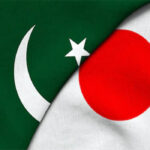ISLAMABAD, Jun 09 (APP): Unveiling the important budgetary document of ‘Pakistan Economic Survey 2021-22’ on Thursday, Minister for Finance and Revenue Miftah Ismail termed the GDP growth rate of 5.97 percent during the outgoing fiscal year unsustainable as the country needed to stabilize the economy before moving towards sustainable growth.
He said the country witnessed a higher economic growth during the year, which resulted in the Current Account Deficit (CAD) to soar to a level where the government had no option but to slow down the economy to control the CAD.
Addressing a press conference after launching the economic survey, the minister said the growth rate was according to the new base year. “Had it been based on the old base year, the GDP (gross domestic product) growth rate would have been lower.”
Flanked by Minister for Planning Ahsan Iqbal, Minister for Power Khurrum Dastgir, and Minister of State for Finance Ayesha Ghous Pasha, Miftah said during the current fiscal year, the imports increased by 48% to $75 billion whereas the exports rose by 28 percent.
The government could manage to pay only 40% of the import bill out of the exports’ earning, while the rest was footed from other sources, including loans, he added.
The finance minister said due to cheap prices of the commodities and petroleum products during the COVID-19 pandemic, the balance of payment (BoP) situation eased off and foreign exchange reserves climbed up.
When the prices started going up, the previous government failed to manage the BoP situation, and resultantly the foreign exchange reserves plunged to below $10 billion again, which was not an encouraging sign, he added.
The reserves, however, were going to rise above $12 billion within a week due to inflow of US$2.4 billion from China, the minister said.
Miftah said in order to streamline the economy, the coalition government had to take tough decisions to save the country from default. With the difficult decision of raising the petroleum prices by Rs 60 per liter, “we have managed to avert an imminent default. Now we will move towards the stability stage and then towards the sustainable growth stage.”
He said during the COVID pandemic, the previous government had a good opportunity to ink long term agreements, but it failed to do so. “The world also gave us incentives during the pandemic, but the then government failed to manage the fiscal space and resultantly the CAD increased.”
He said the PTI regime had laid “economic land mines”, which were in fact against the state of Pakistan and not the present coalition government. The whole nation had to face hours long load-shedding due to their mismanagement.
The minister said the country’s Foreign Direct Investment (FDI) in 2017-18, the last year of PML-N government, was $2 billion, which had reduced to $1.25 billion in the outgoing fiscal year.
Likewise, he said, the Federal Board of Revenues’ tax collection was over 11% of the GDP during the last PML-N tenure, but the PTI government failed to increase it in the first three years and even in the fourth year it could not reach to 11%, while it should have been over 15 %.
The minister said the fiscal deficit was expected to around Rs 5,600 billion, however, the coalition government was trying to reduce it. In the first year of the PTI government, the fiscal deficit was 9.1% of GDP, which was a record in the country’s history, he added.
Miftah said the average fiscal deficit during five years (2013 to 2018) of the last PML-N government was 5.1% of GDP in five years (2013 to 2018). In the last year of the PML-N government, the deficit was Rs 1,600 billion while it was expected to be Rs 5,000 billion in the last year of PTI regime.
He said debt servicing in 2017-18 was Rs 1,500 billion while it was Rs 3,100 billion in the outgoing fiscal year. The coalition government would pay Rs 3,900 billion as debt servicing next year.
Minister for Planning Ahsan Iqbal said the GDP growth rate showed higher numbers due to re-basing of the economy. “If we consider the original base then the numbers will be very low.”
He said the development sector received the biggest hit during the outgoing fiscal year as against total allocation of Rs 5,500 billion under the Public Sector Development Programme (PSDP), only Rs 900 billion was released.
“When the public sector investment shrinks, then that of the private sector also shrinks as both are inter-linked,” he added.
In 2017-18, he said, the Western world was lined up to invest in Pakistan but the PTI government failed to attract the investment.
Ahsan Iqbal maintained that no government would never want to burden the common man by increasing Rs 60 per liter petrol price. “We delayed the price hike by one month as we explored the possibility of creating fiscal space to continue the subsidy, however, we could not find any space and had to take a tough decision.”
He said for a big country like Pakistan, at least Rs 2,000 billion should be allocated for the federal development programme to meet the needs of the people.
To a question, Miftah Ismail said after the budget, the government would engage the International Monetary Fund (IMF) with better reforms.
According to the Economic Survey of Pakistan 2021-22, the real GDP posted a growth of 5.97 percent in FY2022.
For Jul-Apr FY2022, the current account deficit remained US$13.8 billion against the deficit of US$0.5 billion last year resulting in widening the Saving-Investment Gap.
Similarly for FY2022, GDP at current market prices stood at Rs 66,950 billion showing a growth of 20 percent over last year (Rs 55,796 billion). In dollar term, it stood US$383 billion.
Regarding per capita income in terms of dollar, there was a rebound seen in FY2021 which continued in FY2022. Per capita income in FY2022 was recorded at US$1,798 which reflects an improvement in prosperity due to the fact that economic growth per person improved.
For the outgoing fiscal year, investment to GDP ratio remained 15.1 percent compared to 14.6 percent recorded in FY2021.
The document added that exports of goods and services posted a growth of 39 percent, and imports of goods and services 46 percent in FY2022.
For FY2022, real GDP (GVA at basic prices 2015-16) posted a growth of 5.97 percent on account of 4.40 percent growth in agriculture, while 7.19 and 6.19 percent growth in industry and services respectively. This growth is slightly above the growth of 5.74 percent recorded for FY2022.
Further the agriculture sector posted growth of 4.4 percent mainly due to 6.6 percent growth in crops and 3.3 percent growth in livestock. The growth in crops was recorded on account of 7.2 percent growth in important crops, 5.4 percent growth in other crops, and 9.2 percent growth in Cotton Ginning. livestock sector which constitutes almost 62 percent share in agriculture, posted a growth of 3.3 percent. The other components of agriculture, forestry and fishing posted growth of 6.1 and 0.3 percent, respectively.
The industrial sector recorded a growth of 7.2 percent in FY2022 compared to 7.8 percent growth in FY2021.Likewise the services sector posted a growth of 6.2 percent on account of 10 percent growth in Wholesale and Retail Trade industry, 5.4 percent growth in Transportation; Storage, 4.1 percent growth in accommodation and food services activities, 4.9 percent growth in Finance and insurance, 3.7 percent growth in Real estate activities, 8.7 percent growth in Education, 2.2 percent growth in Human health and social work activities, and 3.8 percent growth in Other private services. However, Public administration and social security (general government) activities posted negative growth of 1.2 percent mainly due to high deflator.
Total revenues increased by 17.7 percent and reached Rs 5,874.2 billion (8.8 percent of GDP) in July-March FY2022 against Rs 4,992.6 billion (8.9 percent of GDP) last year.
A significant increase in tax collection was the key factor in boosting revenue growth, which more than offset the decline in non-tax revenues.Total tax collection (Federal & Provincial) grew by 28.1 percent to reach Rs 4,821.9 billion during July-March FY2022 as compared to Rs 3,765.0 billion in the comparable period of last year. Non-tax revenues, on the other hand, fell 14.3 percent to Rs 1,052.2 billion in July-March FY2022, compared to Rs 1,227.6 billion in the same period the previous year.
Total expenditures grew by 27.0 percent to reach Rs 8,439.8 billion in July-March
FY2022 against Rs 6,644.6 billion last year. Current expenditures grew by 21.2 percent to Rs 7,378.0 billion during July-March FY2022 as compared to Rs 6,085.4 billion in the comparable period of last year.
Higher growth in non-markup expenditures lifted up the total current spending. Total
development expenditure increased significantly by 54.6 percent to Rs 1,032.7 billion in July-March FY2022 against Rs 668.0 billion in the comparable period of last year.
The federal PSDP grew by 28.1 percent to Rs 452.3 billion during July-March FY2022 against Rs 353.0 billion last year.FBR tax collection during July-May, FY2022, increased by 28.4 percent to Rs 5,348.2 billion against Rs 4,164.3 billion last year.
The headline inflation CPI, averaged at 11.3 percent during July-May, FY2022 against 8.8 percent in the comparable period last year.
As per the Survey, total public debt was Rs 44,366 billion at end-March 022. Domestic debt was Rs 28,076 billion and external public debt was Rs 16,290 billion or US$ 88.8 billion at end March-2022.
In the energy sector, the import bill of oil increased by 95.9 percent to US$17.03 billion during July-April FY2022 compared to US$8.69 billion during the same period last year. Liquefied Natural Gas witnessed an increase of 82.90 percent in value, while Liquefied Petroleum Gas (LPG) imports also jumped by 39.86 percent during July-April FY2022.
In the social protection sector, the second phase of Ehsaas Emergency Cash Programme (ECAP-II) was launched in June, 2021. As of 30-03-2022, an amount of Rs 30.18 billion was disbursed to 2.50 million additional beneficiaries (other than UCT beneficiaries) @ Rs 12,000 per beneficiaries to ever-married women of the eligible families having valid CNIC.
The Survey added that Ten Billion Tree Tsunami Programme planted 579.093 million plants during July-March FY2022 and cumulatively attained level of 1586.18 million plants till March 2022. Through the programme 327,877 man-months were employed uptil March 2022.







